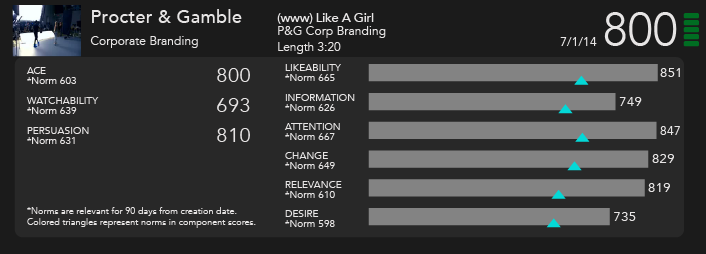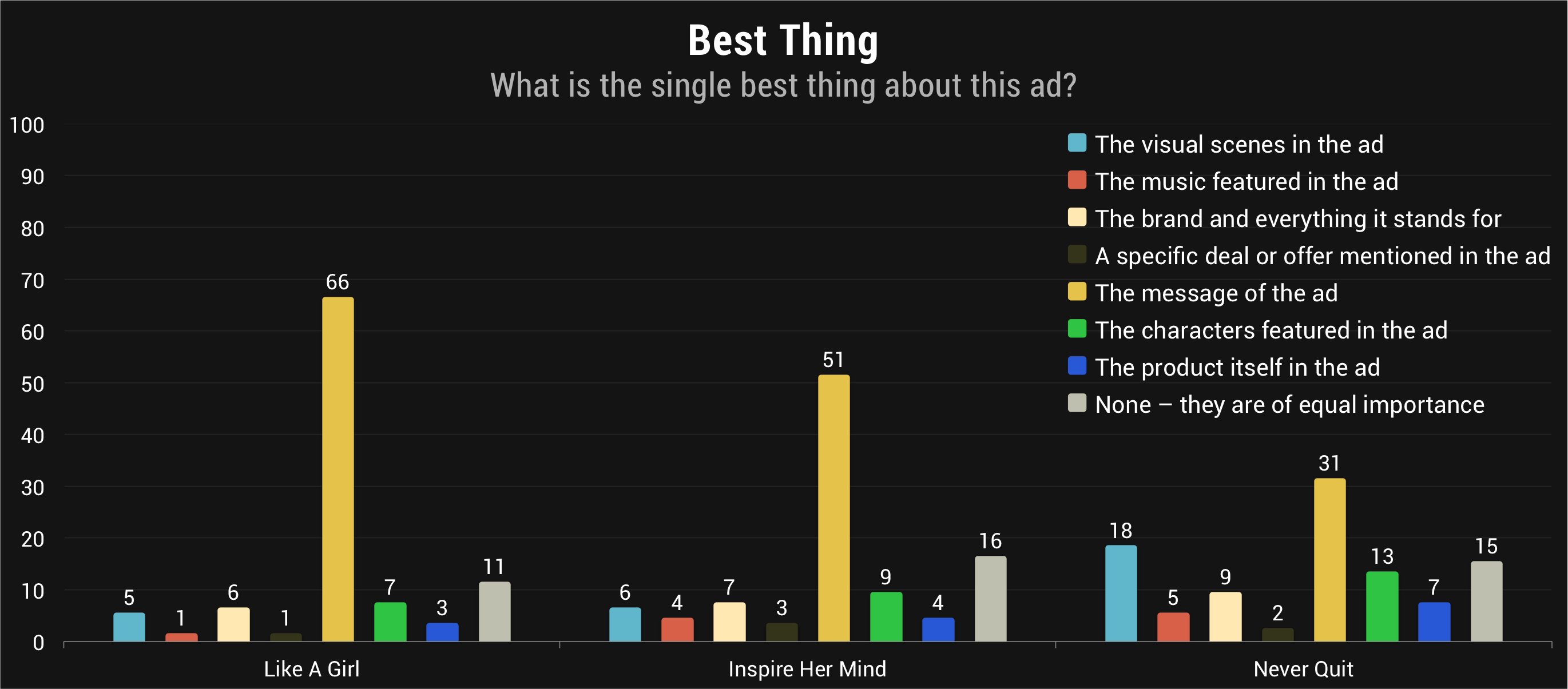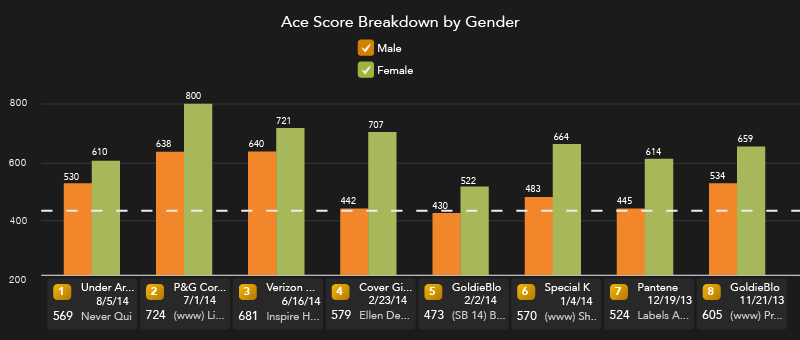Feeling a little defeated today, girl? Well, there’s an ad for that.
In the last half decade, advertising has evolved. With the growth of online and digital video advertising, the playing field has been leveled in a lot of ways—tiny companies like GoldieBlox can play hardball with giants like Mattel. With that, all types of advertisers have the ability to send powerful messages to its viewers. And, as such, there are some that have chosen to jump on the movement of “fempowerment” advertising. While this concept is nothing new (Dove started its famous “Real Beauty” campaign back in 2004), we’ve certainly seen an uptick in ads focused on the empowerment and equality of women in the last year.
With the recent, national debut of yet another female empowerment spot, this time from Under Armour, we have tested eight such ads in the last 12 months and now have the opinions of over 2,000 American women on how effective these ads really are.
The most creatively effective spot also happens to be the longest and one of the more recent ads. Viral sensation “Like A Girl,” from Procter & Gamble brand Always, was awarded a staggering Ace Score of 800 among women.
Each of the ad’s six Persuasion components (as scored by women) pushed the boundaries of perfection. While the ad’s scores in Likeability and Attention are incredible—helping the ad achieve its 46 million views and viral status—it’s the ad’s scores in Change and Relevance that are a little tougher to achieve and equally as impressive. The Change component scored 28% higher than the 90-day average, indicating that women felt the brand was moving in a new direction. Likewise, the ad has a Relevance score 34% above the 90-day norm, meaning women felt the ad was pertinent to their own lives.

Figure represents female scores only.
Are high female Change and Relevance scores the key to a successful “girl power” ad? Well, that’s certainly one component. The other key to an effective fem-power ad is creating a clear, targeted message. After all, the whole point of this type of ad is to send a message—let women know the brand is behind women crushing stereotypes in favor of female empowerment.
While the message is the driving force behind these types of ads, it can sometimes be lost in translation in the eyes of the consumer. In Always’ “Like A Girl,” an astounding 66% of consumers said that the best thing about the ad was its message. Similarly, “Inspire Her Mind,” which is Verizon’s moving spot and also the second highest rated ad of the bunch, had 51% of respondents indicate the message was the best thing.
On the lower end of the spectrum is Under Armour’s recent delve into female-oriented advertising. The ad, “Never Quit,” scored above the Apparel category norm with women (610); but, as seen in the chart below, consumers weren’t quite in agreement that the message was the best thing. While 31% of consumers chose the message as the best part, many consumers also enjoyed the strong visual scenes and seeing Misty Copeland. Afterall, I think everyone can agree that the scenes of Copeland’s calves and strength are exceptionally powerful.

The disparity among consumers of the best thing about “Never Quit” means some consumers were occupied with other, wonderful elements of the ad which perhaps distracted from the ad’s intended focal point—the message.
With these ads having such strong, singular messages, one might assume that the brand could easily be lost in communication. Believe it or not, according to our research, it seems consumers are able to identify the brand fairly easily after watching such focused advertisements. Always, Verizon, Cover Girl and Special K each have 80+ percent of consumers correctly naming the ad’s brand post-viewing. This is especially amazing for female-oriented brands like Always and Cover Girl where 50% of consumers (i.e. men) don’t even use or purchase the products for themselves.
Of course, how well-known the brand is to begin with is still extremely meaningful. After watching GoldieBlox’s viral spot, “Princess Machine,” only about 50% of consumers could accurately name the ad’s brand. Naturally, that is likely more to do with how well-known the brand is to begin with rather than the actual branding in the ad.
The last big question we have been unable to answer, thus far, is whether or not these ads are actually changing the way consumers, women and men, think and feel about themselves and each other. What we’ve seen so far is that women are not yet tired of these messages, which is meaningful in itself. And, in many ways, men aren’t tired of hearing these messages either.
All eight of these spots in the last year have scored above their category norms with women.

It’s unlikely we’ll see such ads dissipate any time soon—which is a good thing, for brands and consumers. Dove has even made a heartwarming spot celebrating Dads. Dove’s “Calls For Dad” was well-received online and scored an impressive 648 with the general population of consumers. In fact, women actually scored the ad slightly higher than what men scored it.
Are there other “powderful” ads you’ve seen? We’d love to continue the conversation. Contact us to learn more about how consumers interpreted these ads.